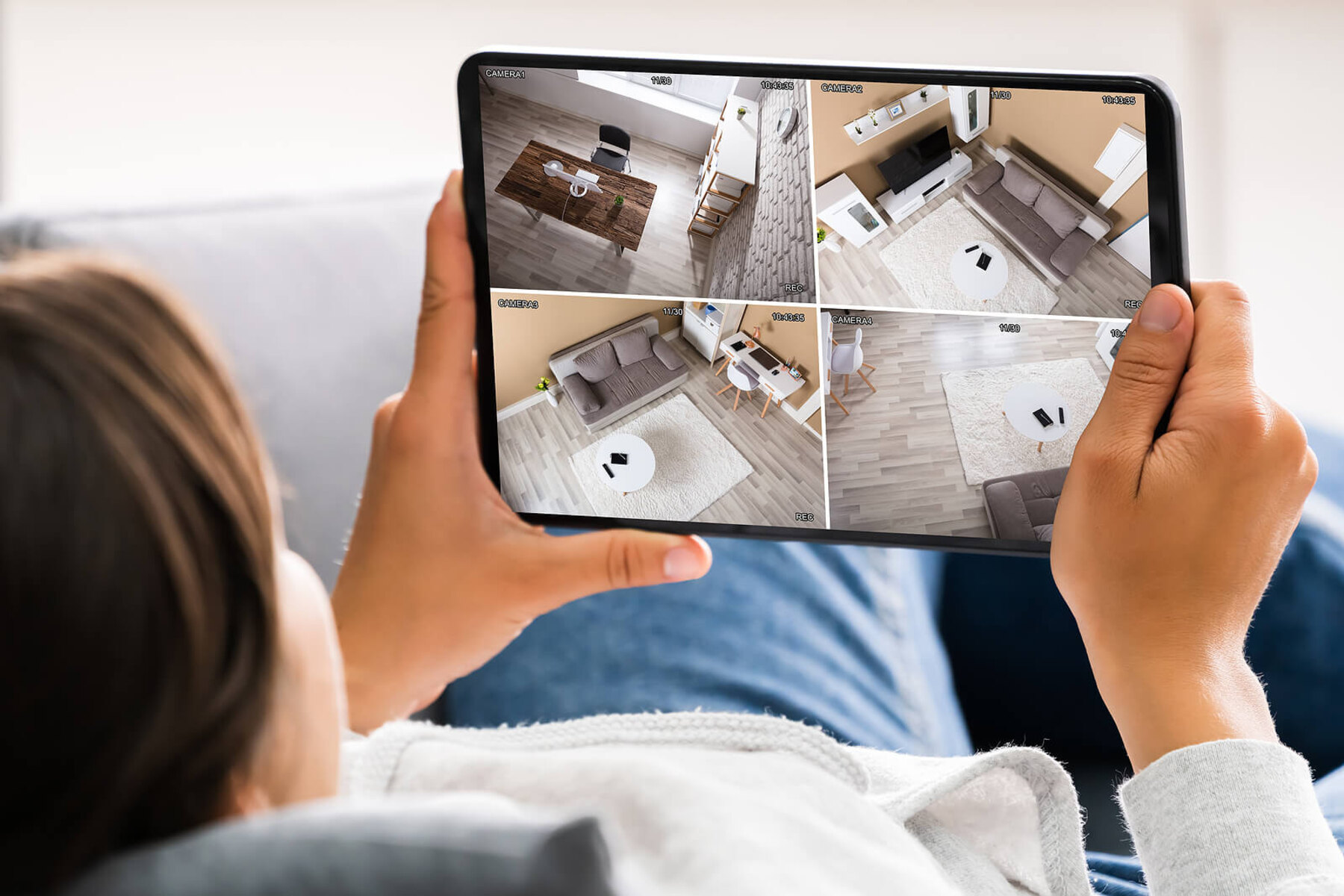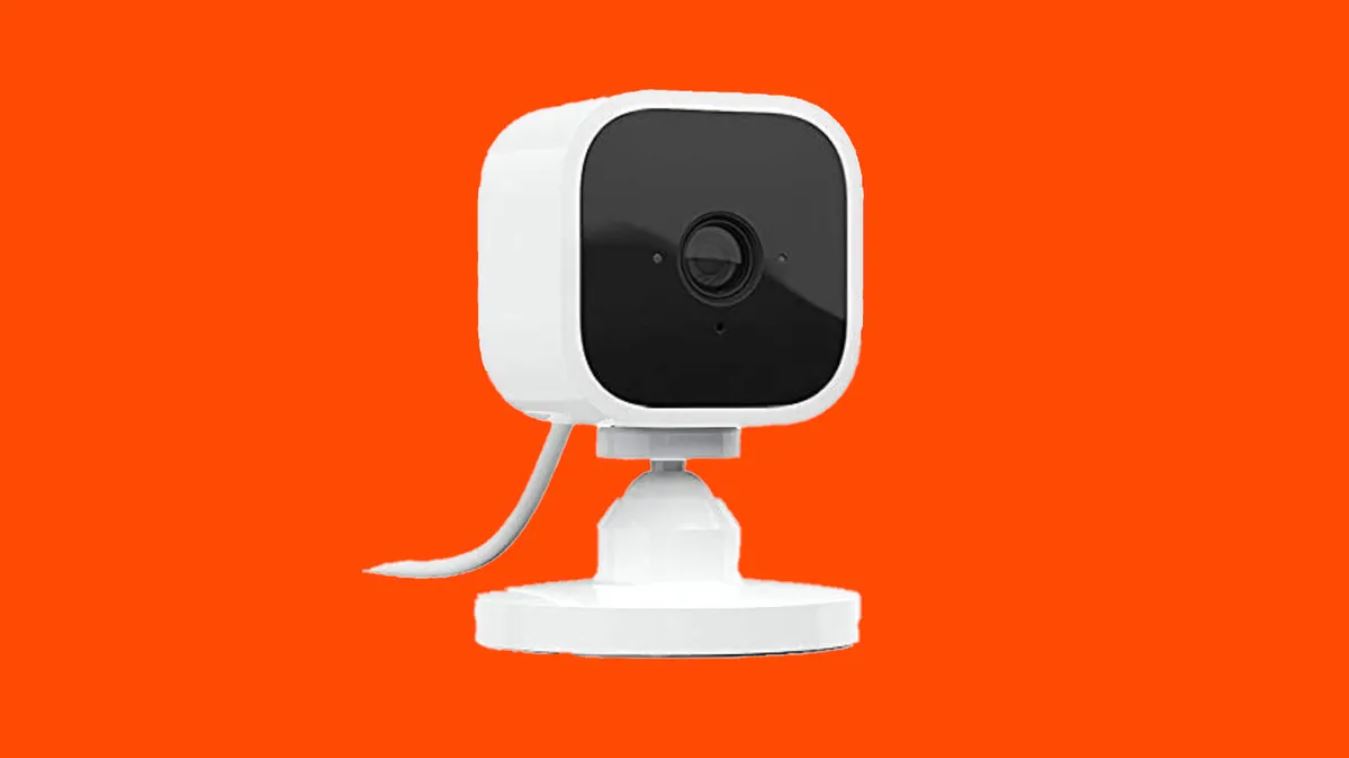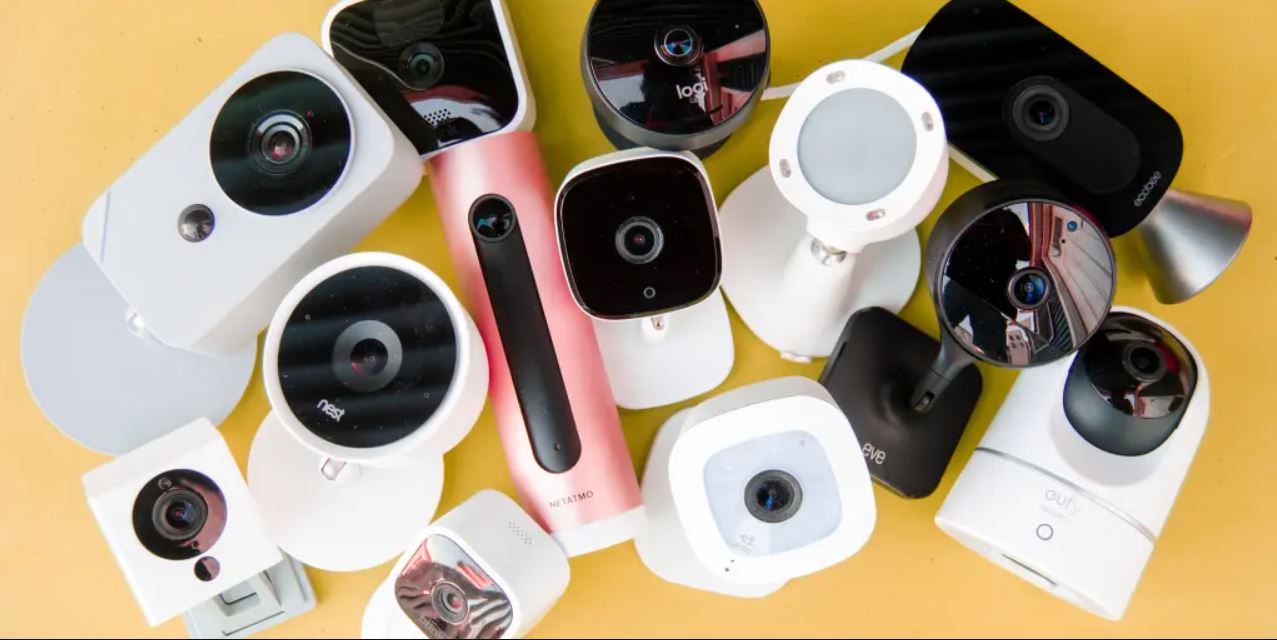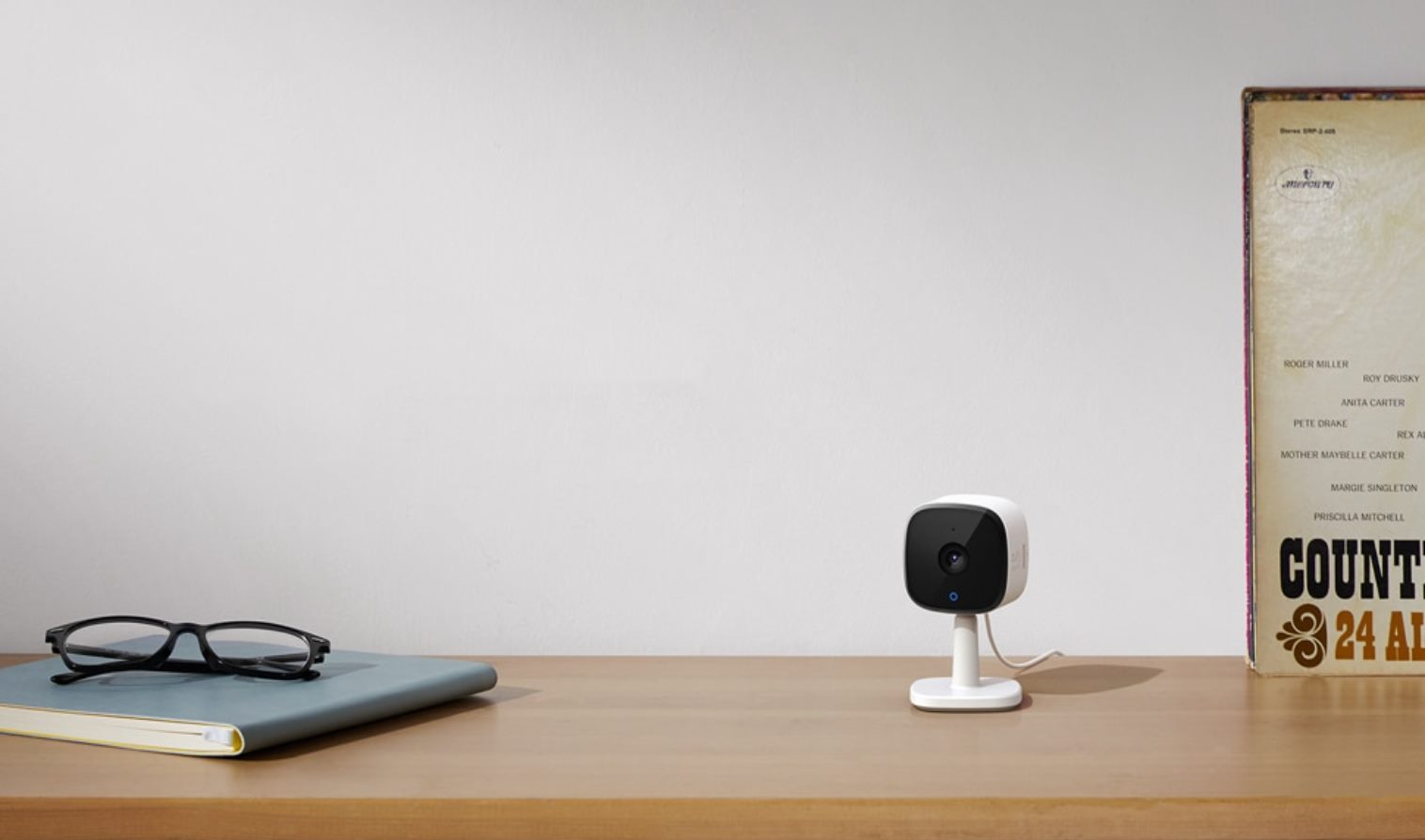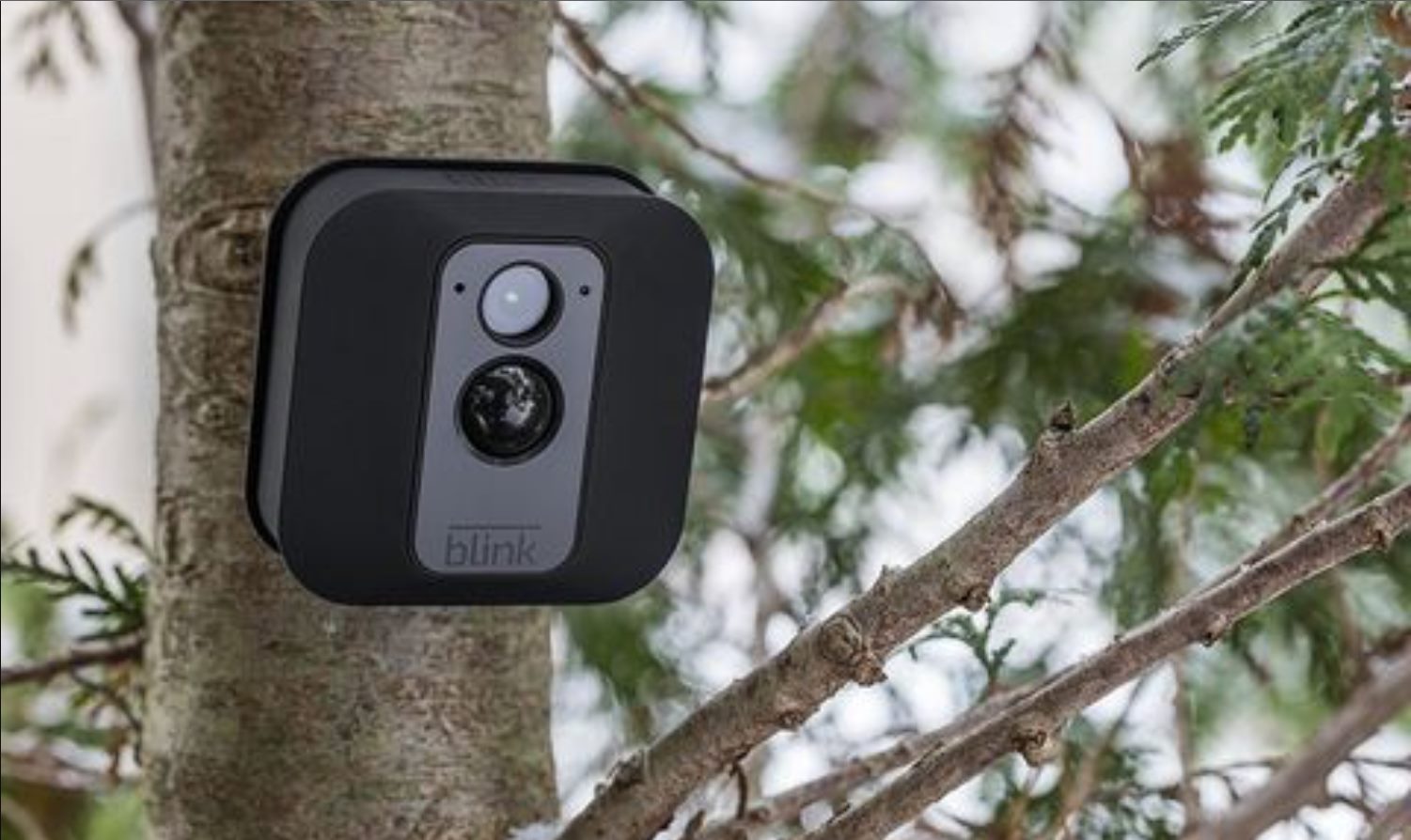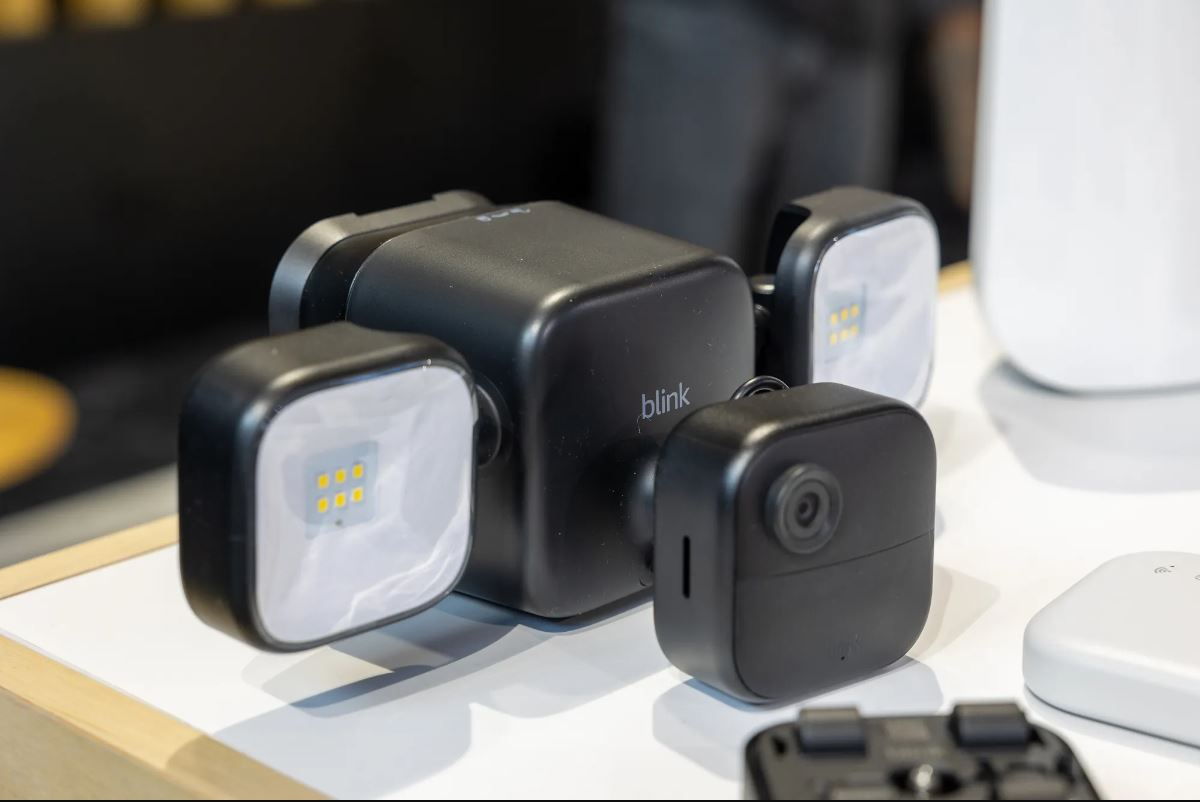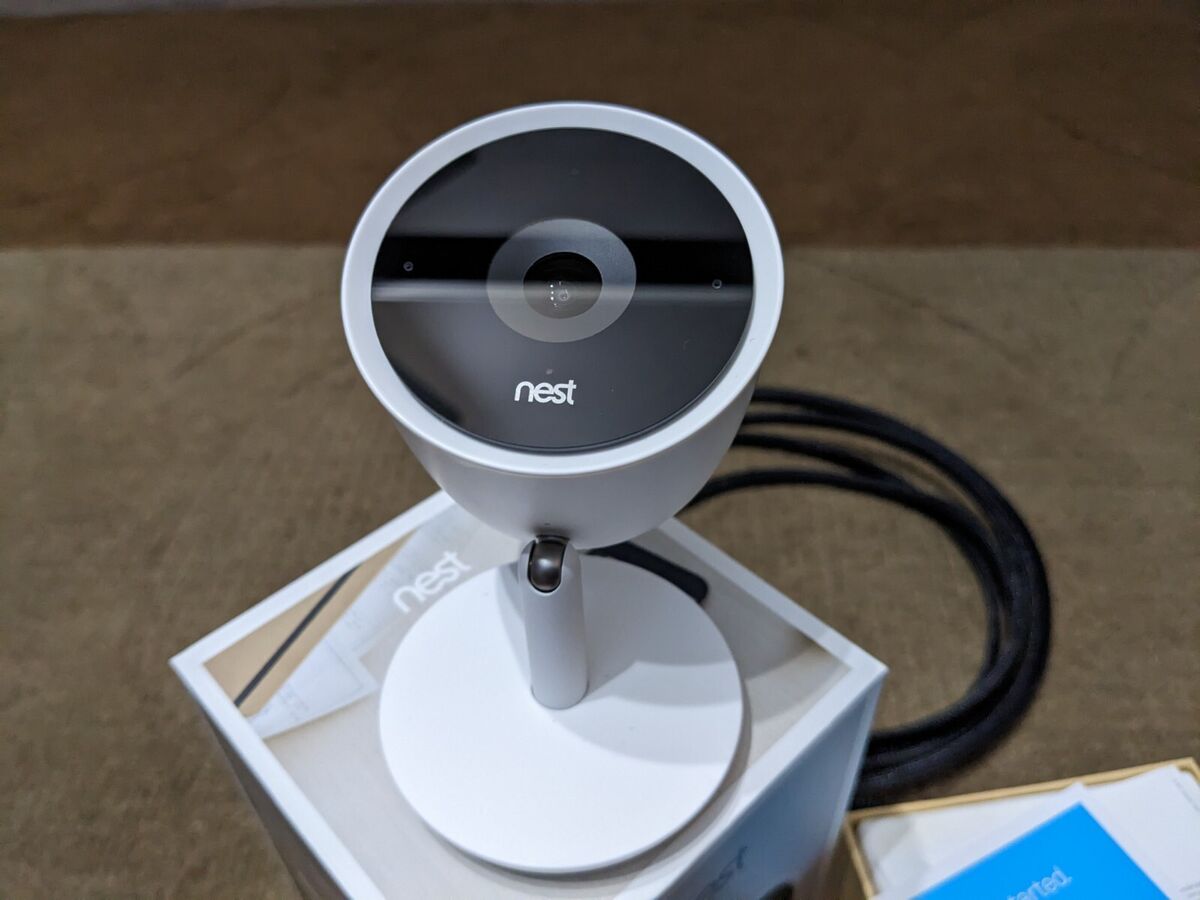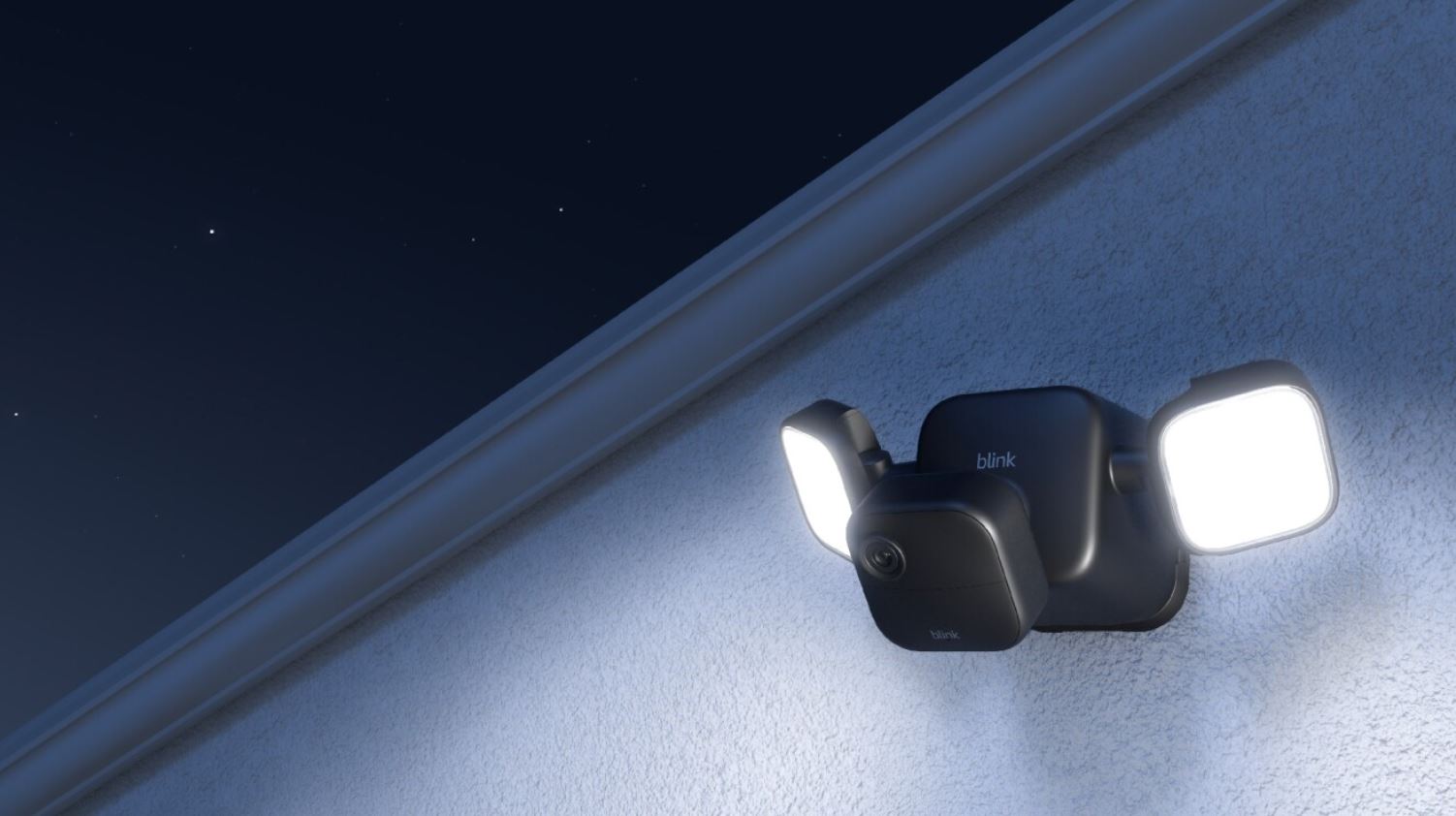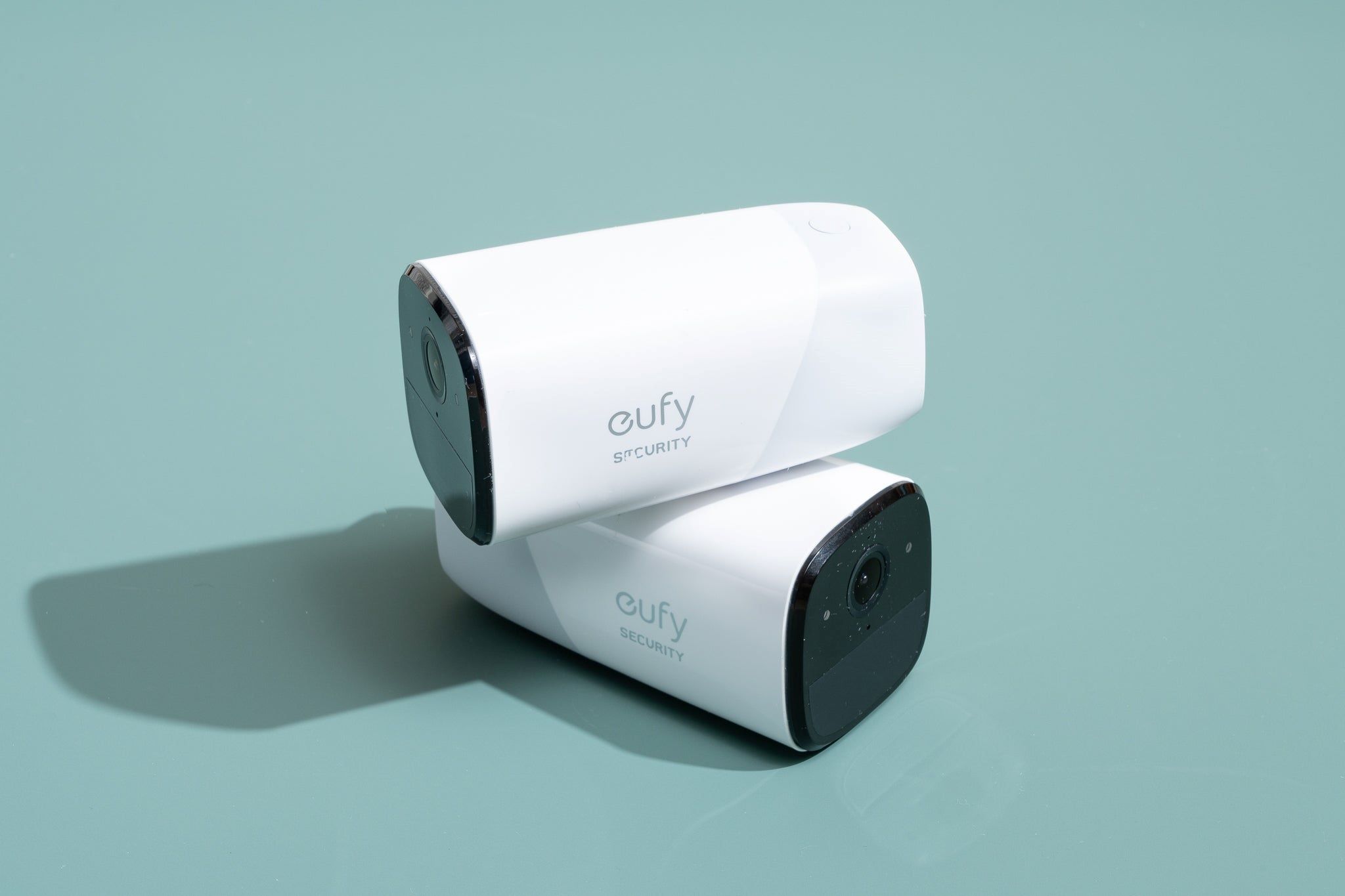Introduction
Welcome to the world of home security cameras! In today’s digital age, ensuring the safety and security of our homes has become even more important. Home security cameras play a crucial role in safeguarding our properties, monitoring activities, and providing us with peace of mind.
In this article, we will take a closer look at how home security cameras work and the various features and options available. Whether you are new to the world of home security or looking to upgrade your existing system, this guide will provide you with valuable insights to make informed decisions.
Home security cameras are like virtual guards that keep a watchful eye on your property, both inside and outside. They are designed to capture and record footage of any activities or events, allowing you to monitor them remotely. These cameras have evolved significantly in recent years, becoming more affordable, user-friendly, and offering advanced features that cater to various needs.
From live video monitoring and motion detection to video storage and integration with home automation systems, home security cameras have come a long way in providing comprehensive security solutions. Understanding how these cameras work and the available options will help you choose the most suitable system for your home.
Throughout this article, we will delve into the different types of home security cameras available, explore how they capture footage, discuss video storage options, remote access and monitoring capabilities, motion detection and alerts, common features to consider, integrating with home automation systems, as well as addressing privacy concerns.
So, if you’re ready to step into the world of home security cameras, let’s dive in and discover how these innovative devices can help protect your home and loved ones.
Understanding Home Security Cameras
Home security cameras are electronic devices that are designed to monitor and capture video footage inside or outside your home. They serve as an extra layer of protection, working alongside your existing security measures to deter potential intruders and provide evidence in the event of a break-in or any suspicious activity.
These cameras come in various shapes and sizes, ranging from discreetly hidden cameras to more prominent ones that act as a visual deterrent. They are equipped with lenses that can capture high-quality video, allowing you to clearly see and identify any individuals or objects within the frame.
One of the key benefits of home security cameras is their ability to provide round-the-clock surveillance. Many models come with night vision technology, which enables them to capture clear footage even in low-light or complete darkness. This ensures that your home remains protected at all times, regardless of the time of day or external lighting conditions.
Additionally, home security cameras can be connected to your home’s Wi-Fi network, enabling you to access the live video feed remotely from your smartphone, tablet, or computer. This feature allows you to keep an eye on your property, whether you are traveling, at work, or simply away from home.
Moreover, these cameras can be equipped with motion sensors that automatically start recording when movement is detected. This not only saves storage space but also allows you to quickly review any noteworthy events without having to sift through hours of footage.
When choosing a home security camera, it is important to consider factors such as the camera’s resolution, field of view, connectivity options, and additional features. Higher resolution cameras provide clearer and more detailed video, while wide-angle lenses offer a broader view of the surrounding area.
Furthermore, some home security cameras are equipped with two-way audio capabilities, allowing you to communicate with whoever is in front of the camera. This can be useful for ensuring the safety of family members or for remotely interacting with visitors or delivery personnel.
In the next section, we will explore the different types of home security cameras available to help you determine which one suits your specific needs and preferences.
Types of Home Security Cameras
When it comes to home security cameras, there is a wide range of options to choose from. Understanding the different types will help you select the camera that best fits your specific security needs and preferences.
1. Indoor Cameras: As the name suggests, indoor cameras are specifically designed for monitoring the inside of your home. They are typically smaller, more compact, and blend seamlessly with your home decor. Indoor cameras are ideal for monitoring specific areas such as living rooms, bedrooms, nurseries, or home offices.
2. Outdoor Cameras: Outdoor cameras are designed to withstand harsh weather conditions and are equipped with protective casings to shield them from the elements. These cameras provide surveillance and protection for the exterior of your home, including front and backyards, driveways, and entry points.
3. Wireless Cameras: Wireless cameras offer the advantage of easy installation and flexibility in terms of camera placement. They connect to your home’s Wi-Fi network, eliminating the need for messy and complicated wiring. With wireless cameras, you can position them anywhere within the range of your Wi-Fi signal.
4. Wired Cameras: Wired cameras, on the other hand, require physical connections to power and video transmission. They are generally more reliable and provide a stable connection compared to wireless cameras. Wired cameras are often preferred for long-term installation or locations where Wi-Fi signals may be weak.
5. PTZ Cameras: Pan-Tilt-Zoom (PTZ) cameras are motorized cameras that can rotate horizontally and vertically and zoom in and out. These cameras can be remotely controlled, allowing you to adjust the direction and focus of the camera to view specific areas or follow moving objects. PTZ cameras are popular for large outdoor areas that require extensive coverage.
6. Bullet Cameras: Bullet cameras get their name from their sleek cylindrical shape resembling a bullet. They are commonly used for outdoor surveillance and have a fixed focal length, providing a narrow field of view. Bullet cameras are often mounted on walls or ceilings and are known for their durability and resistance to vandalism.
7. Dome Cameras: Dome cameras are dome-shaped and come with a protective casing. They are versatile and can be used for both indoor and outdoor surveillance. Dome cameras offer a wider field of view and are popular for their discreet design, as it is difficult for potential intruders to determine which direction the camera is facing.
8. Hidden Cameras: Hidden cameras are designed to blend seamlessly into the environment, making them barely visible to others. They can come in various forms such as wall clocks, smoke detectors, or even everyday objects. Hidden cameras are ideal for covert surveillance, allowing you to monitor without raising suspicion.
By understanding the different types of home security cameras available, you can choose the right camera to meet your specific surveillance needs and enhance the security of your home.
How Home Security Cameras Capture Footage
Home security cameras are equipped with various technologies to capture and record video footage. Understanding how these cameras capture footage will give you insight into their functionality and the quality of the recorded video.
1. Image Sensor: The image sensor is the heart of a security camera. It converts the optical image into an electronic signal that can be processed and recorded. The two main types of image sensors used in security cameras are CCD (Charge-Coupled Device) and CMOS (Complementary Metal-Oxide-Semiconductor). Both offer high-quality video, but CMOS sensors are generally more energy-efficient and cost-effective.
2. Lens: The lens of a security camera determines the field of view and the level of detail captured. Wide-angle lenses provide a broader view but may sacrifice some level of detail, while telephoto lenses offer a narrower view but can capture more detail from a distance. Some cameras also have adjustable lenses, allowing you to manually control the focus and zoom.
3. Video Compression: To minimize the size of recorded video files, home security cameras use video compression algorithms. These algorithms reduce the amount of data needed to store the footage while maintaining acceptable video quality. Common video compression formats include H.264 and H.265, which strike a balance between file size and video clarity.
4. Recording Modes: Home security cameras offer various recording modes to suit different needs. Continuous recording captures video footage 24/7, ensuring that nothing is missed. Motion-activated recording starts recording only when motion is detected within the camera’s field of view, reducing storage space and making it easier to review significant events. Some cameras also offer scheduled recording, where you can specify specific times for recording.
5. Video Resolution: The resolution of a security camera refers to the number of pixels captured in each frame. Higher resolution cameras offer clearer and more detailed video, allowing you to see finer details such as facial features or license plate numbers. Common resolutions include 720p, 1080p (Full HD), and 4K Ultra HD.
6. Frame Rate: The frame rate refers to the number of frames captured per second. A higher frame rate results in smoother video playback. Most security cameras offer 30 frames per second (fps), which is considered sufficient for capturing ordinary motion. However, for fast-paced actions or detailed surveillance, opting for a higher frame rate may be beneficial.
7. Storage: Home security cameras typically store recorded footage either locally or in the cloud. Local storage options include SD cards or Network Attached Storage (NAS) devices. Cloud storage allows you to access your video footage from anywhere with an internet connection and provides an off-site backup in case the camera or local storage is damaged or stolen.
By understanding how home security cameras capture footage, you can make informed decisions about the features and specifications that are important to you, ensuring you have a reliable surveillance system tailored to your needs.
Video Storage Options for Home Security Cameras
When it comes to storing video footage captured by your home security cameras, you have several options to consider. The choice of storage method will depend on factors such as the amount of footage you need to store, accessibility, and the level of security you require.
1. Local Storage: Many home security cameras offer the option of storing video footage locally on an SD card or a Network Attached Storage (NAS) device. Local storage provides the advantage of quick and easy access to your footage without relying on an internet connection. However, it is important to regularly back up the footage to prevent loss in case of theft or damage to the camera or storage device.
2. Cloud Storage: Cloud storage allows you to store your video footage remotely on secure servers accessed through the internet. This option provides the advantage of off-site backup, protecting your footage from physical damage or theft. Cloud storage also offers the convenience of accessing your footage from anywhere with an internet connection, using your mobile device or computer. However, it may incur monthly or annual subscription fees, depending on the storage plan you choose.
3. Hybrid Storage: Some home security camera systems offer a hybrid storage option that combines both local and cloud storage. This allows you to have a local copy of your footage for quick access while also having the added security and convenience of cloud storage. Hybrid storage provides redundancy, ensuring that your footage is properly backed up in case of any storage failures.
4. Hard Drive: For users with multiple cameras or those who require extensive storage capacity, connecting a dedicated hard drive to your security camera system may be a viable option. This allows you to have ample storage space for longer retention periods and can be more cost-effective in the long run compared to cloud storage subscriptions. However, it requires regular maintenance and backup to prevent data loss.
5. Network Video Recorder (NVR): An NVR is a specialized device that records and stores video footage from IP cameras. It offers centralized management and storage capabilities, allowing you to easily access and review your footage. NVRs can support multiple cameras and provide advanced features such as remote access and motion detection. They typically come with built-in storage or the option to connect external hard drives for additional storage capacity.
6. DVR and VHS Tapes (Legacy Systems): Older security camera systems may use Digital Video Recorders (DVRs) or VHS tapes for storage. These systems record and store footage locally on physical media. However, they lack the convenience and capabilities of modern storage options and may require manual management and maintenance.
When choosing a video storage option for your home security cameras, consider factors such as the amount of storage space needed, accessibility, backup options, and your budget. Finding the right storage solution will ensure that you have reliable access to your video footage whenever you need it.
Remote Access and Monitoring of Home Security Cameras
One of the key advantages of modern home security cameras is the ability to remotely access and monitor your cameras from anywhere, at any time. Remote access provides homeowners with peace of mind and the ability to keep a watchful eye on their property, even when they are not physically present.
Remote access is made possible through the integration of home security cameras with your home’s Wi-Fi network. This connection allows you to access live video feeds and recorded footage using a smartphone, tablet, or computer, while being connected to the internet.
There are several benefits to remote access and monitoring:
1. Real-time Monitoring: With remote access, you can view the live video feed from your security cameras in real time. This is particularly useful when you want to check in on your home while you’re at work, on vacation, or simply away from home. By accessing live footage, you can have peace of mind and assess any potential risks or suspicious activities immediately.
2. Instant Alerts: Many home security cameras offer the ability to send instant alerts to your smartphone or email when motion is detected within the camera’s field of view. This allows you to respond quickly to any potential threats, such as a break-in or unauthorized entry. The ability to receive real-time alerts gives you the opportunity to take immediate action or notify authorities if necessary.
3. Remote Playback: In addition to live video feeds, remote access also allows you to access and review previously recorded footage. This can be valuable when investigating incidents or analyzing suspicious activities that occurred while you were away. Whether you need to check on a particular event or simply want to review daily footage, remote playback gives you flexibility and convenience.
4. Two-way Communication: Some home security cameras are equipped with two-way audio capabilities, enabling you to communicate with individuals on the other side of the camera. This feature can be valuable for various scenarios, such as verifying the identity of visitors, giving instructions to delivery personnel, or even warning potential intruders that they are being monitored.
5. Multiple Camera Management: Remote access and monitoring allows you to manage multiple home security cameras from a single interface. This is particularly useful for homeowners with multiple cameras installed throughout their property. With remote access, you can easily switch between camera views, view different locations simultaneously, and have comprehensive oversight of your home’s security.
When using remote access and monitoring, it is crucial to ensure the security of your camera system. This includes setting strong passwords for your cameras and Wi-Fi network, keeping firmware up to date, and utilizing secure connections to access your video feeds.
By embracing remote access and monitoring, you can stay connected and in control of your home’s security, ensuring the safety of your property and loved ones no matter where you are.
Motion Detection and Alerts with Home Security Cameras
Motion detection and alerts are essential features of modern home security cameras that enhance their effectiveness in monitoring and protecting your property. By utilizing motion sensors, these cameras can detect movement within their field of view and send alerts to notify you of any potential threats or suspicious activities.
Here are the key aspects of motion detection and alerts with home security cameras:
1. Motion Sensors: Home security cameras are equipped with built-in motion sensors that can detect changes in the video frame. These sensors continuously monitor the camera’s field of view, analyzing pixel changes to determine if motion is occurring. Advanced cameras may even have the ability to distinguish between human movement, pets, and other objects.
2. Sensitivity Settings: To customize the motion detection feature, home security cameras offer sensitivity settings that allow you to adjust the level of motion required to trigger an alert. Higher sensitivity settings will detect even subtle movements, while lower settings may reduce false alerts triggered by tree branches swaying or small animals passing by.
3. Zones and Masking: Some security cameras allow you to define specific zones within the camera’s field of view where motion will be detected and trigger alerts. This feature allows you to focus on areas of interest, such as doorways or windows, while ignoring areas with frequent movement, such as roads or tree branches. Masking features further refine these zones by excluding specific areas from motion detection.
4. Instant Alerts: When motion is detected, home security cameras can send instant alerts to your smartphone, tablet, or email. These alerts provide you with real-time notifications, allowing you to take immediate actions if necessary. By receiving instant alerts, you can quickly assess the situation and determine if further action, such as contacting authorities, is needed.
5. Activity Log: In addition to real-time alerts, many home security camera systems maintain an activity log that records all instances of detected motion. This log allows you to review past events, playback recorded footage, and identify patterns or recurring activities that may require attention.
6. Scheduled Motion Detection: To avoid constant alerts, security cameras often offer the option to schedule motion detection based on specific times of the day or week. This is useful for homeowners who do not need continuous monitoring during certain hours, such as when family members are at home or when pets are active.
7. Smart Alerts: Some advanced home security camera systems incorporate AI and machine learning technologies to provide more precise and intelligent alerts. These cameras can differentiate between routine events and potential threats, minimizing false alarms and providing more reliable notifications.
Motion detection and alerts play a crucial role in minimizing false alarms and ensuring that you are promptly informed of any suspicious activities. By leveraging these features, you can have peace of mind knowing that your home security camera system is actively monitoring your property and keeping you aware of potential threats.
Common Features and Considerations for Home Security Cameras
When choosing a home security camera, there are several common features and considerations to keep in mind. Understanding these features will help you select a camera that best fits your specific security needs and provides the level of protection you require.
1. Video Quality: The video quality of a security camera is an important consideration. High-resolution cameras capture clearer and more detailed footage, making it easier to identify individuals or objects within the frame. Opt for cameras with at least 1080p resolution or higher for optimal image quality.
2. Field of View: The field of view refers to the area that a security camera can capture. Cameras with a wider field of view allow for broader coverage and reduce blind spots. Consider the layout of your property and the areas you want to monitor when choosing a camera with an appropriate field of view.
3. Night Vision: If you require 24/7 monitoring, consider cameras with night vision capabilities. These cameras use infrared LEDs to illuminate the area in the absence of external lighting, allowing for clear video capture in the dark. Look for cameras with a sufficient range for your specific needs.
4. Connectivity: Home security cameras can be wired or wireless. Wired cameras offer a more stable and reliable connection, while wireless cameras provide flexibility in terms of placement. Consider your home’s layout and whether running wires is feasible when deciding between wired and wireless options.
5. Two-Way Audio: Some cameras have built-in microphones and speakers, enabling two-way audio communication. This feature allows you to speak to individuals near the camera, whether it’s to interact with visitors or warn potential intruders that they are being recorded.
6. Mobile App Access: Look for cameras that offer mobile app access. This allows you to view live video feeds, playback recorded footage, and receive alerts on your smartphone or tablet. Ensure the app is user-friendly and compatible with your device’s operating system.
7. Intelligent Alerts: Advanced security cameras incorporate intelligent alert features, such as person detection or facial recognition. These technologies can help reduce false alarms by focusing on specific types of activity and notifying you of significant events.
8. Weather Resistance: If you plan to install outdoor cameras, ensure they are weatherproof and can withstand elements such as rain, snow, and extreme temperatures. Look for cameras with an IP rating to indicate their level of weather protection.
9. Storage Options: Consider how you want to store the video footage captured by your cameras. Options include local storage with SD cards or external hard drives, cloud-based storage subscriptions, or hybrid solutions that combine both.
10. Integration with Smart Home Systems: If you have a smart home system, consider cameras that can integrate and work seamlessly with it. This allows for centralized control and automation, such as triggering camera recording when a door sensor is activated.
By considering these common features and factors when choosing a home security camera, you can ensure that you select a system that meets your specific needs, enhances your home’s security, and provides you with peace of mind.
Integrating Home Security Cameras with Home Automation Systems
Integrating home security cameras with a home automation system is a powerful way to enhance the overall security and convenience of your home. By combining these technologies, you can create a seamless and interconnected network that allows for centralized control, automation, and intelligent security monitoring.
Here are some benefits and considerations when integrating home security cameras with a home automation system:
1. Centralized Control: Integrating security cameras with a home automation system provides you with a centralized platform to monitor and control all your security devices. This includes cameras, door locks, alarms, and sensors. With a single app or control panel, you can easily access and manage your entire security system.
2. Automatic Recording: By integrating your security cameras with a home automation system, you can automate the recording process based on specific events or triggers. For example, when a motion sensor detects movement at your front door, your cameras can automatically start recording, ensuring no important moments are missed.
3. Timed Surveillance: With integration, you can schedule specific times for surveillance. For instance, when you’re away on vacation, you can program your security cameras to record at predetermined intervals, giving the appearance that someone is home. This helps deter potential intruders who may be casing your property.
4. Smart Alerts: Integrating cameras with a home automation system allows for smarter alerts and notifications. Instead of receiving alerts for every detected motion, you can set up rules and triggers to receive notifications only when specific events occur, such as when a door is opened or when a person is detected near a designated area.
5. Automation with Other Devices: Integration enables automation and coordination between security cameras and other smart home devices. For instance, when a security camera detects motion at your front door, you can program your smart lights to turn on automatically, creating the appearance that someone is home and potentially deterring intruders.
6. Remote Access: Integrating home security cameras with a home automation system allows for remote access and control. You can monitor live video feeds, view recorded footage, and receive alerts from anywhere using a smartphone, tablet, or computer with an internet connection.
7. Energy Efficiency: Integration with a home automation system allows you to optimize energy efficiency. For example, you can program your security cameras to turn off when you’re at home or activate only during specific hours. This reduces unnecessary energy consumption and extends the lifespan of your cameras.
When integrating home security cameras with a home automation system, it is essential to ensure compatibility between devices and choose a platform that offers the features and capabilities you desire. Consider factors such as ease of setup, user-friendly interfaces, expandability, and compatibility with third-party devices.
Integrating home security cameras with a home automation system provides a comprehensive and personalized security solution, giving you greater control and peace of mind over the safety of your home and loved ones.
Protecting Your Privacy with Home Security Cameras
While home security cameras offer valuable protection for your property and loved ones, it is also crucial to take steps to protect your privacy. With the growing prevalence of surveillance technologies, it is essential to ensure that your security cameras are used responsibly and in accordance with privacy regulations. Here are some important considerations to protect your privacy when using home security cameras:
1. Proper Placement: Careful consideration of camera placement is essential to ensure that your cameras are monitoring the intended areas while respecting the privacy of your neighbors and passersby. Position your cameras to focus only on your property, avoiding capturing areas beyond your boundaries, such as public sidewalks or neighboring homes.
2. Use Privacy Zones: Many modern security cameras offer the option to set up privacy zones. These zones allow you to block out specific areas within the camera’s field of view that you want to keep private, such as windows of neighboring properties or sensitive areas within your own home.
3. Secure Camera Access: Take steps to secure the access to your security camera system. Change the default username and password, and regularly update them to ensure they are strong and unique. Enable two-factor authentication if available to add an extra layer of security.
4. Encrypt Video Feeds: Ensure that the video feeds from your security cameras are encrypted to prevent unauthorized access. This will ensure that the footage cannot be intercepted or viewed by unauthorized individuals.
5. Secure Network: Protect the network that your security cameras are connected to by ensuring that your Wi-Fi network requires a strong password. Regularly update your router’s firmware and consider implementing additional security measures, such as using a separate guest network for your cameras.
6. Notify Others: If your security cameras capture areas beyond your property, inform your neighbors about the presence of the cameras and their intended purpose. This open communication can help address concerns and maintain good relationships.
7. Compliance with Regulations: Familiarize yourself with local laws and regulations regarding the use of surveillance cameras. Ensure that the placement and use of your security cameras comply with privacy laws and regulations applicable in your jurisdiction.
8. Limit Access to Footage: Only grant access to the footage from your security cameras to trusted individuals who have a legitimate need to view the recordings. Regularly review and revoke access privileges as needed.
9. Regularly Monitor Camera Activity: Keep an eye on the activity of your security cameras to ensure they are functioning correctly and are not compromised. Check for any unauthorized access attempts or suspicious activities that could compromise your privacy.
10. Consider Privacy-Focused Cameras: Some security camera models are designed with privacy features in mind, such as built-in physical covers or automatic privacy modes. These cameras offer an additional layer of privacy protection.
By taking these privacy considerations into account, you can enjoy the peace of mind provided by home security cameras while also respecting the privacy of yourself and others. Being responsible and mindful of privacy can help maintain the positive benefits of security cameras without infringing upon the rights and privacy of others.
Conclusion
Home security cameras play a vital role in keeping our homes and loved ones safe. By understanding how these cameras work and the various features they offer, we can make informed decisions to enhance our home security systems.
We explored the different types of home security cameras, including indoor and outdoor cameras, wireless and wired options, and specialized cameras like PTZ, bullet, dome, and hidden cameras. Each type has its own unique benefits and applications, allowing homeowners to tailor their security setup to their specific needs.
We also discussed how home security cameras capture footage using image sensors, lenses, video compression, and various recording modes. Understanding these processes helps us evaluate the video quality, storage options, and playback capabilities of a security camera system.
Remote access and monitoring enable homeowners to keep a watchful eye on their properties from anywhere, providing real-time video feeds, instant alerts, and the ability to review recorded footage remotely. This level of accessibility and control ensures that we can actively monitor our homes and respond swiftly to any potential threats or incidents.
The integration of home security cameras with home automation systems offers a multitude of benefits, including centralized control, automation, and coordination with other smart devices. These features provide convenience, energy efficiency, and enhanced security by creating a comprehensive network of interconnected devices.
However, as we embrace the capabilities of home security cameras, it is crucial to prioritize privacy. By responsibly placing cameras, securing access, encrypting video feeds, and complying with regulations, we can protect our privacy while still benefiting from the security provided by these cameras.
In conclusion, a well-designed home security camera system can significantly enhance the safety and security of our homes. By understanding the different types, features, and considerations, we can select a system that meets our specific needs and provides peace of mind. Whether it’s through monitoring live video feeds, receiving instant alerts, or integrating with home automation systems, home security cameras provide us with the tools to actively protect what matters most.







